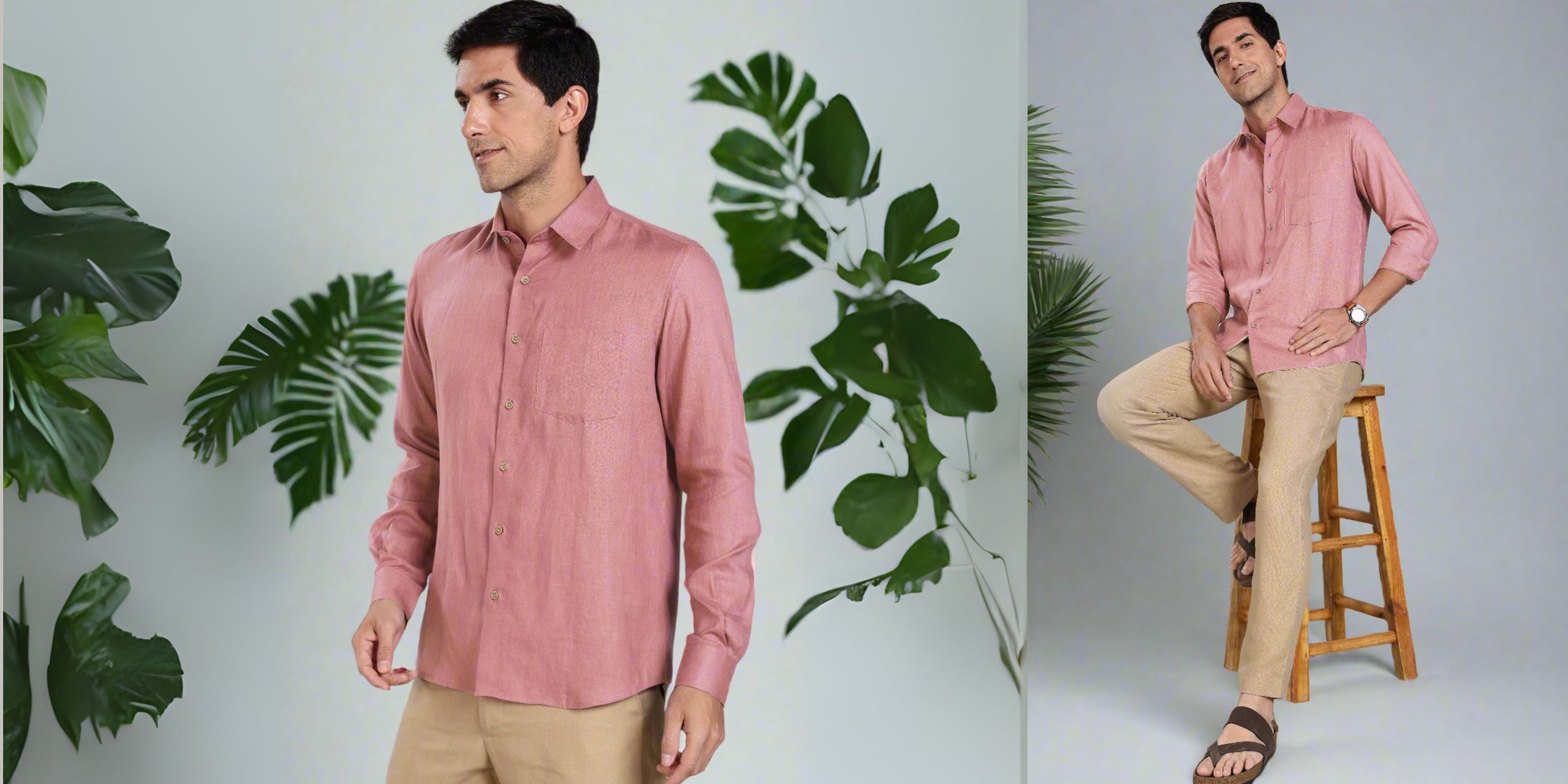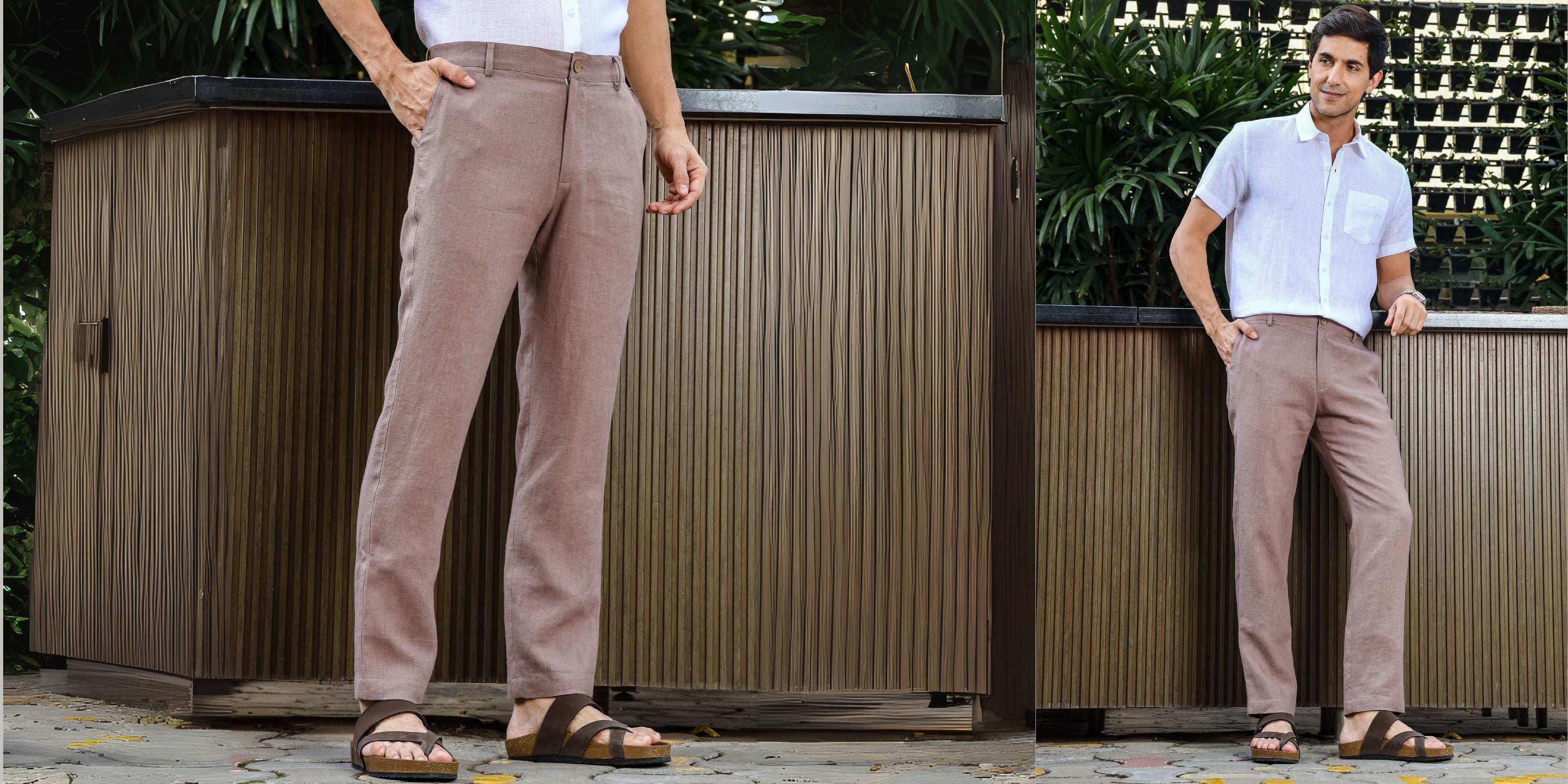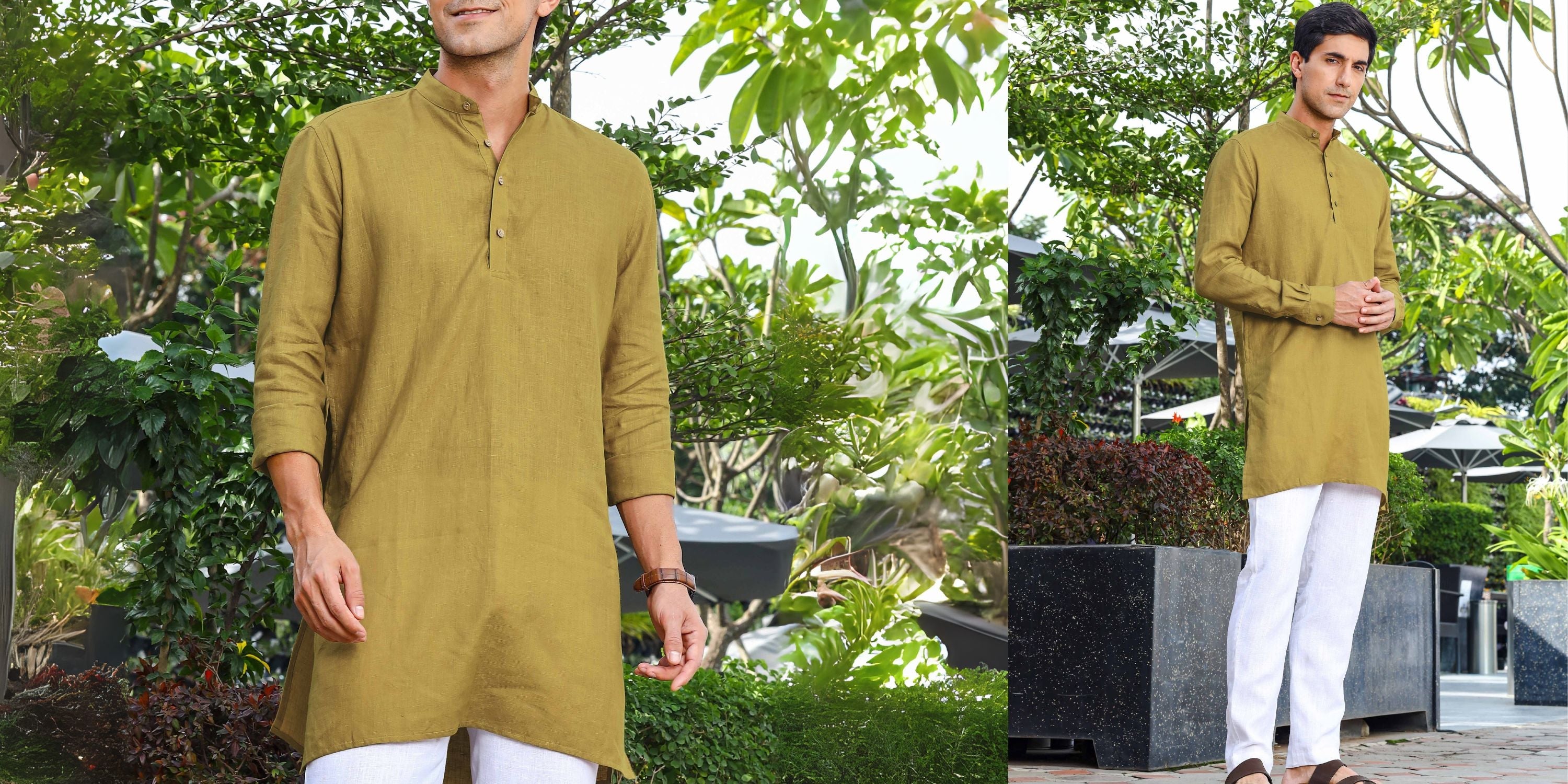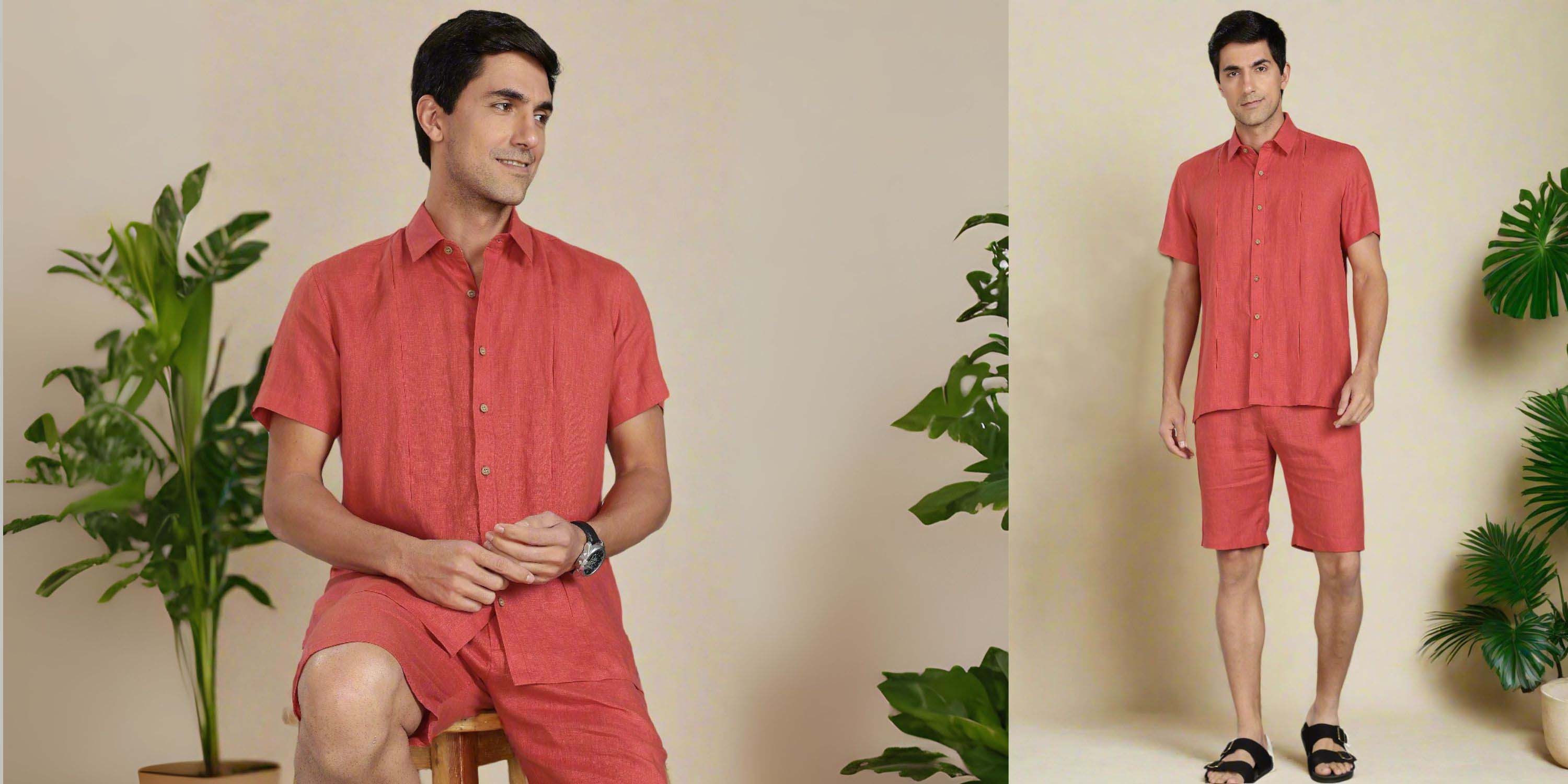Types of Linen: A Complete Guide to Linen Fabrics and Their Uses
If you're curious about the different types of linen and want to understand which one suits your lifestyle, you're in the right place. This complete guide helps you confidently choose the right types of linen fabric for everything from clothing to home décor.
Linen is one of the oldest and most respected natural textiles in human history. Known for its cooling properties, elegant drape, and eco-friendliness, linen continues to evolve with modern design and technology. But did you know there are many types of linen, each with unique textures, weaves, and applications? Whether you're shopping for clothes, bedsheets, curtains, or formalwear, understanding the types of linen will help you make better decisions.
In this guide, we’ll explore the different types of linen fabric, their origins, uses, benefits, and how to care for them. Let’s dive into the world of timeless, breathable beauty.
What is Linen?
Linen is a textile made from the fibers of the flax plant, and it's one of the oldest fabrics known to mankind. Historical records show linen was used in Ancient Egypt to wrap mummies, worn by Greeks and Romans as garments, and later woven into fine linens across Europe.
What makes linen so unique? It is natural, breathable, strong, and highly eco-friendly. Across all types of linen, you'll find shared qualities that make this fabric ideal for modern, conscious living.
Key Properties of Linen
-
Linen is made from flax fibers, making it completely natural and biodegradable.
-
It is lightweight yet strong, often lasting longer than cotton.
-
Linen is breathable, keeping the body cool even in hot weather.
-
It naturally resists bacteria and mold.
-
Among the many types of linen fabric, each variety offers durability and sustainability.
Understanding what linen is gives you a solid foundation for exploring the different types of linen available today.
Benefits of Linen Fabric
Linen is not just beautiful; it's functional, versatile, and ideal for various climates and lifestyles. Across all types of linen, these core benefits remain consistent.
Why Choose Linen?
-
Breathable and Thermoregulating: Linen adjusts to your body temperature, making it cool in summer and warm in winter.
-
Durable: Linen fibers are naturally tough, allowing garments and textiles to last for years, even decades, with proper care.
-
Eco-Friendly: Linen production uses fewer resources, making it a top choice for sustainable fashion and living.
-
Hypoallergenic: Perfect for people with sensitive skin or allergies.
-
Softens with Age: Unlike other fabrics, linen gets softer and more comfortable the more you use and wash it.
Whether you’re wearing it or decorating your home with it, choosing from the right types of linen brings timeless comfort and elegance into your daily life.
Types of Linen: Based on Weave and Usage
Let’s explore the most popular types of linen, broken down by weave patterns and their ideal uses.
Types of Linen by Weave Pattern
There are several types of linen classified based on their weave. Each one has a distinct texture, weight, and appearance.
-
Plain Weave Linen: A basic, tight weave that feels crisp and breathable. Commonly used in casual shirts, blouses, and home curtains.
-
Damask Linen: Features intricate patterns woven using a satin weave. Found in luxurious tablecloths, napkins, and formal upholstery.
-
Bird’s Eye Linen: Recognizable by its small, dot-like weave. Highly absorbent, making it perfect for hand towels and cloth diapers.
-
Cambric Linen: Lightweight and ultra-soft. Often used for delicate garments like handkerchiefs, lingerie, and lightweight summer dresses.
-
Huckaback Linen: A textured weave made for absorbency. Ideal for bathroom towels and kitchen cloths.
-
Venice Linen: A more decorative version of damask linen, often featuring floral or artistic motifs. Used for decorative purposes in high-end interior design.
-
Canvas Linen: A coarse, heavy-duty weave. Commonly used in bags, upholstery, shoes, and outdoor furniture.
These types of linen offer different levels of texture, softness, and strength, suitable for various applications.
Types of Linen by Application
Linen is also categorized by its end use. These types of linen vary in thickness, weight, and finish depending on the final product they’re meant for.
-
Sheeting Linen: Smooth and wide, ideal for bedsheets and summer suits.
-
Towel Linen: Absorbent and textured. Used in bath towels, hand towels, and dish cloths.
-
Upholstery Linen: Heavy, stiff, and durable. Designed for furniture, cushions, and other interior applications.
-
Handkerchief Linen: Lightweight and fine-textured, suitable for accessories and small fashion items.
-
Butcher’s Linen: Very stiff and durable. Often used for aprons, workwear, and restaurant uniforms.
-
Suiting Linen: Medium to heavyweight linen designed for formal blazers, trousers, and jackets.
-
Bathroom and Table Linen: Includes runners, placemats, and decorative towels. Often features damask or embroidered designs.
By understanding the functional types of linen, you can choose exactly what suits your needs, whether it’s for daily wear or special occasions.
Blended Types of Linen Fabric
Blended fabrics combine linen with other fibers to enhance comfort, affordability, or maintenance ease. These types of linen fabric are increasingly popular in both fashion and interiors.
-
Linen-Cotton Blend: Softer and easier to iron than pure linen. Great for casual clothing and bedding.
-
Linen-Silk Blend: Adds a smooth, shiny finish and is often used for elegant garments or scarves.
- Linen-Polyester Blend: Offers wrinkle resistance and affordability. Common in home textiles like curtains and upholstery.
These types of linen fabric provide variety without compromising the core benefits of linen.
How to Choose the Right Type of Linen Fabric
With so many types of linen available, how do you pick the right one?
Here’s how to make the right choice:
-
Choose plain weave or cotton-linen blend for breathable summer clothing.
-
Opt for damask or Venice linen if you're looking for luxury tableware or home décor.
-
Select canvas linen or upholstery linen for heavy-use items like sofas and bags.
-
Go for huckaback or towel linen if high absorbency is a priority.
-
Pick cambric or handkerchief linen for lightweight accessories or sleepwear.
-
If sustainability is important to you, stick with pure, organic types of linen that are biodegradable and ethically made.
Knowing the right types of linen for your lifestyle will save money, enhance comfort, and elevate your sense of style.
Linen vs Cotton: Which is Better?
Still deciding between cotton and linen? Let’s compare without a table:
-
Breathability: Linen is more breathable and keeps you cooler in the heat.
-
Absorbency: Both are absorbent, but linen dries faster.
-
Sustainability: Linen is grown using fewer resources, making it more eco-friendly.
-
Wrinkle Resistance: Cotton resists wrinkles better than linen.
-
Durability: Linen lasts longer and gets better with age.
Final thoughts: While cotton is familiar and versatile, the various types of linen offer superior sustainability, texture, and comfort.
How to Care for Linen Fabrics
All types of linen fabric need proper care to maintain their texture and strength.
Here are care tips for lasting beauty:
-
Wash in cold or lukewarm water with gentle detergent.
-
Avoid bleach or harsh chemicals.
-
Air dry or tumble dry on low heat.
-
Iron while damp for smooth results.
-
Store folded or hanging to prevent deep creases.
By caring for your types of linen properly, you ensure they remain soft, stylish, and strong for years.
Final Thoughts on Linen’s Timeless Appeal
Linen is more than just a textile; it's a statement of conscious living, natural elegance, and timeless style. From ancient civilizations to today’s ethical fashion, the many types of linen have played a key role in dressing people and decorating homes with charm and function.
Whether you choose crisp plain weave linen or luxurious damask linen, you're investing in fabric that combines comfort, style, and sustainability.
If you haven’t already, now is the time to embrace the versatility and quality that only the finest types of linen can provide.
Read Our Latest Blogs
Does Linen Shrink After Wash | Linen Kurta Fabric | Types of Linen Fabric | Cotton and Linen | Linen Outfits | What is a Linen Kurta | How to Style a White Shirt | What Color Shirt Goes With Grey Pants
Frequently Asked Questions
Q1. What are the most common types of linen?
Ans: The most common types of linen are plain weave, damask, cambric, huckaback, canvas, and Venice linen.
Q2. Which types of linen are best for clothing?
Ans: Plain weave, cambric, and linen-cotton blends are great for shirts, dresses, and summer suits.
Q3. What types of linen fabric are ideal for towels?
Ans: Huckaback linen and bird’s eye linen are absorbent and perfect for bathroom and kitchen use.
Q4. Can linen be used in cold weather?
Ans: Yes, thicker types of linen like suiting linen and blended linen are excellent for layering in winter.
Q5. What’s the difference between damask and Venice linen?
Ans: Both are decorative, but Venice linen has more elaborate patterns and a softer drape.
Q6. Is linen better than cotton for hot weather?
Ans: Yes, linen breathes better and stays cooler, especially in humid climates.
Q7. Are there affordable types of linen?
Ans: Yes, linen-polyester and linen-cotton blends are cost-effective without sacrificing comfort.
Q8. How do I prevent linen from wrinkling?
Ans: Iron linen when slightly damp, hang items immediately after drying, and consider a linen blend if you prefer wrinkle resistance.









